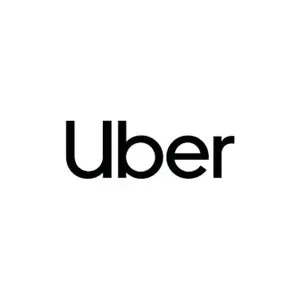Key Takeaways
- The “say my name” scam in ridesharing involves opportunists deceiving drivers to get free rides by confirming their name first.
- This scam exploits the process where drivers confirm passenger identity but can be misled by scammers posing as the actual rider.
- Rideshare companies like Uber instruct drivers to confirm passengers’ names for authentication, preventing such scams.
- Drivers can avoid this scam by keeping doors locked, asking passengers to confirm their name first, and verifying their identity before entry.
The rise of rideshare services like Uber and Lyft has made it easier than ever for vehicle-less travelers to get where they’re going. It’s also opened the door for a number of unscrupulous transportation-related scams.
These carpool con jobs aren’t just dishonest—when pulled off successfully, they can impact a driver’s livelihood. A prime example is the so-called “say my name” scam, in which cunning opportunists attempt to score free rides by way of a simple deception.
First we had the Uber code text scam, now this. But what is the Uber “say my name” scam and how does it work?
Let’s break down the finer points of the grift and go over some ways you can keep from being taken in. But first, a little background.
What Is the “Say My Name” Scam?
The “Say My Name” scam in the context of rideshare services like Uber and Lyft involves a deceptive tactic where an opportunistic individual attempts to get a free ride by exploiting the driver’s attempt to verify their identity.
This scam was born from the tragedy of 21-year-old Samantha Josephson, who was killed on March 29, 2019, after getting into a vehicle she mistook for her Uber ride.
Following this incident, there was a social media call for drivers to identify passengers by name, leading to the “say my name” practice.
Samantha’s friends and family expressed their outrage in a hashtag: “#WhatsMyName.” Before long, #WhatsMyName had spread like wildfire.
However, this trend developed into a scam that is now widely-used by Uber riders. Here’s how the scam works:
- A person, who is not the actual passenger, waits near a location where an Uber or Lyft driver is expected to arrive.
- When the driver arrives and rolls down their window to greet the passenger, the scammer asks the driver to say their name.
- If the driver complies and says the name of the person they believe they are picking up, the scammer confirms it as their own, even though it isn’t.
- The scammer then gets into the car and directs the driver to their desired destination, effectively getting a free ride.
- The actual passenger, meanwhile, is left waiting and eventually realizes that their ride has been taken by someone else.
Why the “Say My Name” Scam is So Effective
The scam is insidious because it exploits the trust and safety measures (like verifying names) that are supposed to protect both riders and drivers.
Uber’s policy actually advises drivers to ask passengers for their names, rather than the other way around, to avoid such scams.
The scam also takes advantage of the information gap between drivers and riders, as drivers only have a name and location, whereas riders have detailed information about the driver and vehicle.
Pro tip for drivers: Any time someone asks you to say their name, or refuses to give it when asked, consider it a red flag.
Example of How Scammers Deceive Their Drivers
Imagine for a moment that you’re a brand-new Uber or Lyft driver. Since you just started, you don’t have much experience navigating rapid-fire passenger interactions and making the kind of snap judgments they often entail.
You check your driver app and see that you’ve received a new ride request. Excited, you switch on the ignition and cruise over to the specified location.
When you get there, you pull up to the curb, throw your car in park, and wait for your passenger to show.
A minute or two later, someone emerges from a nearby nightclub and approaches your vehicle. They open the door and lean in, cautiously.
- Person: Hi.
- You: Evening.
- Person: What’s the name?
- You: Kristen, isn’t it?
- Person: Yep! That’s me.
- You: Great! You’re going to 17th and Hayworth, right?
- Person: Actually, can you take me to the wine bar on Canal? One of my friends is having a birthday party there.
- You: Sure, no problem. Buckle up!
You proceed to shuttle your rider to their destination without incident.
They thank you and get out. You return their thanks and tell them to have fun and be safe. You’re feeling good about helping someone out and making a little money in the process.
It isn’t until you’ve already dropped them off that you notice you have a message from your actual passenger wondering where you are. By this time, they’ve already requested another driver.
You’re out precious time and fuel with nothing to show for it, not even a cancellation fee. It’s that easy.
Brett’s Take: Thoughts From an Expert
I have heard of drivers being penalized for cancellations or negative ratings as a result of this scam.
While Uber is pretty fair to drivers overall, sometimes the actions of this scam appear like a driver cancelled a ride on a rider unfairly.
The key to remaining active as a driver is to take great notes about the incident, proactively reach out to support, and then submit dashcam footage if you have it.
I HIGHLY suggest documenting any sketchy interactions, ON TOP of a getting a mirror-mounted dashcam. The more evidence that you have to prove that you were in the right, the better.
How To Avoid the “Say My Name” Scam
Following these simple steps can help you prevent dubious riders from taking advantage of you:
- Keep your doors locked and roll your window down to communicate.
- Don’t reveal the name of the passenger you’re supposed to be picking up. Instead, wait for the person to provide their name and double-check that it’s the right one.
- Ask the person to say your name to be doubly sure that you’re their driver.
The bottom line is that you should never let anyone into your vehicle until you’ve both established your respective identities—starting with them.
When the Uber “Say My Name” Scam Goes Wrong
Things don’t always go the way scammers intend. Sometimes the plan backfires.
Check out this video shared by YouTube rideshare expert Dustin Is Driving to witness an attempted “say my name” scam fall apart in real-time:
As is typical for this sort of swindle, the woman initiates the exchange by asking the driver to say her name.
The driver is not buying it; he explains to her, “That’s not how it works.” After he rightly refuses to say her name, the woman storms off angrily. The driver advises her to review his company’s pickup policy.
Desperate or perhaps just confused, the woman’s friends venture two guesses at the driver’s name, both of them incorrect.
At this point, the driver has seen all he needs to see. He pulls away, visibly frustrated.
This frustration is understandable given the frequency with which this kind of thing happens to well-meaning rideshare professionals who are just trying to make an honest living.
Frequently Asked Questions
Are Uber drivers supposed to ask for your name?
Yes, Uber drivers are instructed to confirm the passenger’s name before providing their own. This practice verifies they are picking up the correct person, enhancing safety and preventing scams like the “say my name” scenario.
Can Uber drivers call you?
Yes, Uber drivers can communicate with you but only through the app’s messaging function. They cannot call you directly to protect privacy. If you receive a call from someone claiming to be your Uber driver, it’s advised to hang up and notify the police.
Wrapping Up
When it comes to promoting safety and ensuring that each rideshare transaction goes off without a hitch, it’s best to do things by the book. There’s a reason that the book exists, after all.
If you’re a rider, make sure the person and vehicle picking you up match the info found in your driver’s profile. If you’re a driver, ask your rider to confirm their name prior to granting them entry.
And if you need a more detailed refresher on Uber pick-up policies, be sure to read through their updated terms and conditions before your next ride.







Correction: I can call a passenger prior to picking them up. Uber disguises their number with an Uber number overlay
Drivers CAN actually call riders using the app., but only prior to starting the ride. The driver’s, as well as the rider’s phone numbers that appear on the phone are not the actual phone numbers of either party.
It seems reasonable to me that BOTH rider and driver should expect that the other party ought to be able to correctly identify them by name. What’s to stop an unscrupulous psycho murderer driver from just saying “Yes, I am! Get in” when asked “Are you my driver, H.H. Holmes?”
Yes, exactly this. Each side should be able to identify the other before going along for the ride or the same thing that happened to Samantha can happen to someone else again. Seems fairly common sense when you put in a little though and I’m not sure why it isn’t the rule.
Great article! But one part is untrue now:
Drivers CAN both call or message the passenger using the Uber app. It goes through Uber’s proxy phone system and they reuse the same few numbers. Real phone numbers are hidden from passenger and driver..
Agree with all the above. Both driver and rider can call each other (actually two different ways with Uber in the app, prior to pick up). We can also message between each other. Same is true for uber eats delivery, Uber shop & pay/deliver, and Uber order & wait/pay/deliver. Same is true for Lyft as well.
I experienced a similar scam working for Uber back in 2013 or 2014. I picked up a young couple in Bellevue, WA and drove them to Capitol Hill in Seattle. When the young man exitted the car, the young woman closed the door, locked it, and said “I don’t feel safe with that guy, can you take me home?” I had already ended the ride on Uber. I told her she’d need to get another Uber. She told me her phone was dead. I asked if she was close and she said “Yeah I live in Seattle”. Well… she lived on the far north end of town about 20 minutes away. On the ride home she pretended to be asleep. When I pulled up to her house, she jumped up and exitted the car with barely a “Thanks”. I felt so scammed I never did Uber again.
From uber.com:
Your driver sees your first name in their app, and your driver’s first name is displayed to you in your app. To safely exchange names, you can ask, “Who are you here to pick up?” The driver may also ask you to confirm their name for their own peace of mind.